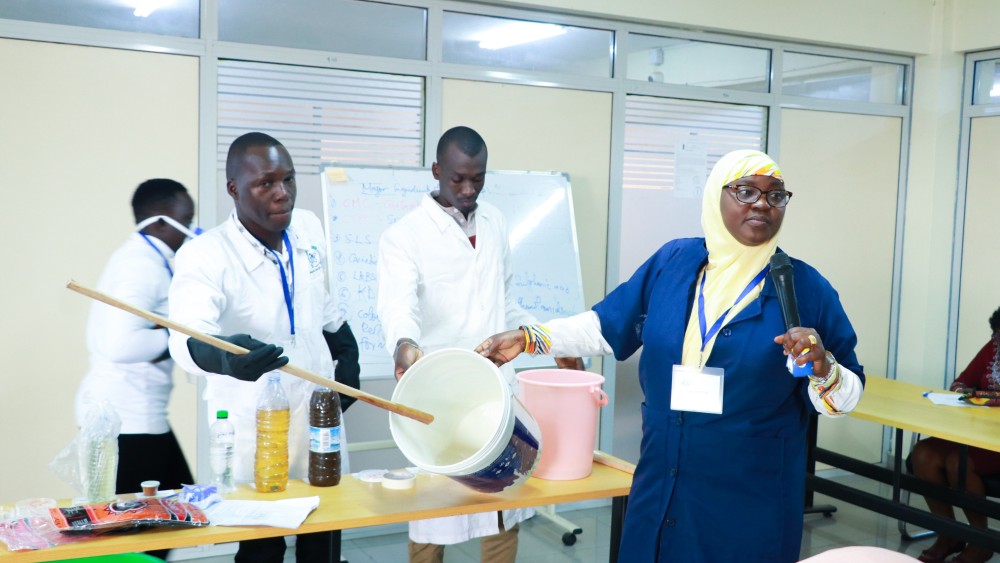
Jul
CoEEI Holds Hands-on Training on Liquid Dishwash Production
July 24, 2024, 3:55 pm
| Title: | Antimalarial combination therapies increase gastric ulcers through an imbalance of basic antioxidative-oxidative enzymes in male Wistar rats |
| Author(s): | Muhamudu Kalange, Miriam Nansunga, Keneth Iceland Kasozi , Josephine Kasolo, Jackline Namulema, Jovile Kasande Atusiimirwe, Emanuel Tiyo Ayikobua, Fred Ssempijja, Edson Ireeta Munanura, Kevin Matama, Ibrahim Semuyaba, Gerald Zirintunda and Alfred Omachonu Okpanachi |
| Year | 2020 |
| Publisher: | BMC Research Notes |
| URI: | https://publications.kiu.ac.ug/publication-page.php?i=antimalarial-combination-therapies-increase-gastric-ulcers-through%C2%A0an%C2%A0imbalance-of%C2%A0basic-antioxidative-oxidative-enzymes-in%C2%A0male-wistar-rats |
| File: | |
| Keywords: | Antimalarials Pharmacodynamics of antimalarial agents Malaria in developing countries Gastric ulcers |
Objective: Antimalarials are globally used against plasmodium infections, however, information on the safety of new antimalarial combination therapies on the gastric mucosa is scarce. The aim of this study was to investigate the effects of Artesunate-Amodiaquine and Artemether-Lumefantrine on ulcer induction. Malondialdehyde (MDA), reduced glutathione (GSH) and major histological changes in male Wistar rats following ulcer induction using Indomethacin were investigated. Gastric ulcers were in four groups; Group I was administered Artesunate, group II received ArtesunateAmodiaquine, group III received Artemether-Lumefantrine, and group IV was a positive control (normal saline). Group V was the negative control consisting of healthy rats.
Results: Antimalarial combination therapies were associated with a high gastric ulcer index than a single antimalarial agent, Artesunate. In addition, levels of MDA were significantly higher in the combination of therapies while levels of GSH were lower in comparison to Artesunate and the negative control. Microscopically, antimalarial combination therapies were associated with severe inflammation and tissue damage than Artesunate in the gastric mucosa showing that antimalarial combination therapies exert their toxic effects through oxidative stress mechanisms, and this leads to cellular damage. Findings in this study demonstrate a need to revisit information on the pharmacodynamics of major circulating antimalarial agents in developing countries.

Kampala International University,
Box 20000, Ggaba Road, Kansanga, Kampala